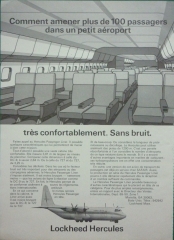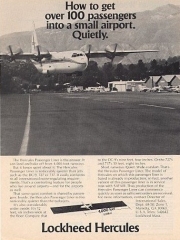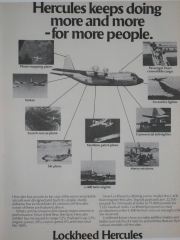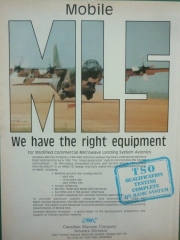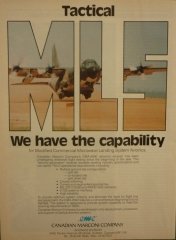-
Posts
367 -
Joined
-
Last visited
-
Days Won
4
Content Type
Profiles
Forums
Store
Gallery
Downloads
Calendar
C-130 Hercules News
Everything posted by Robert Podboy
-
The only replacement for a Hercules is another Hercules… Made for Africa [AAD16D3] http://www.janes.com/article/63863/made-for-africa-aad16d3
-
TO 1C-130E(H)-1 is for sale on EBay for $25. It is dated: change 1 15 October 2004 The title page says: Distribution Statement – Distribution authorized to the Department of Defense and U.S. DoD contractors only… Warning – This document contains technical data whose export is restricted by the Arms Export Control Act…. Violations of these export laws are subject to severe criminal penalties. Handling and Distribution notice – Comply with distribution statement and destroy by any method that will prevent disclosure of the content(s) or reconstruction of the document. This may be an old document but some of these planes are still flying. Should sale of TO’s be allowed?
-
We got Omega off the ground. Omega is a new way of telling where you are. It’s an electronic navigator. Works any time. Day or night. Without stars. But best of all it tells your position, anywhere on earth, within a mile or less, Uncanny! Northrop developed the first Omega receivers for U.S. Navy ships. These receivers listen to low frequency radio signals beamed throughout the worlds from a network of eight stations now being completed. Omega compares signals from all stations received and pinpoints the location. So practical, civilian ships are equipping with Omega, too. The Navy didn’t stop there. They’ve installed Omega aboard attack submarines finding their way in the ocean depths. Its low frequency signals pass where others fail. The flying Navy is now being Omega-navigated, too. Our equipment will go aboard the new C-9B logistics transport aircraft. Once it got off the ground, Omega also proved its mettle to the U.S. Air Force. Soon, new “early-warning” aircraft…AWACS…will have Northrop navigation and guidance systems. And, Omega is flexible. For example, we’ve combined it with a Northrop inertial navigation system in the USAF’s Airborne Weather Reconnaissance System…AWRS…to provide the accuracy required for tracking severe weather fronts. The word Omega means the end. But the way people keep finding new uses for it, we think it’s just the beginning. NORTHROP Omega aboard an AWRS C-130 Hercules. 1973
-
Now the same containers that ride ships, trains, trucks …fly Lockheed airfreighters Used to be that shipping by water, by surface or by air called for special packing and handling to fit each carrier. Now the trend is to intermodal containers – vans, bulk commodity units, cargo cages and pallets – which eliminate repacking and standardize handling. It’s no coincidence that Lockheed airfreighters accept all these standard containers, right up to the big 8x8x40-foot size. For Lockheed designed the rugged propjet Hercules and the new fanjet StarLifter with freight interchange compatibility in mind, and these containers slide into the big planes at truckbed height through full-opening rear doors. What’s ahead for commercial airfreight in efficient cargo operations, may be judged by recent Air Force demonstrations. Using mechanized freight shifters, a fully loaded StarLifter was emptied in 6 minutes, the cargo reloaded into Hercules in 8 minutes. It’s a great combination: StarLifter for long haul at jet Speeds, and Hercules for the perfect feeder freighter. Lockheed-Georgia: A Division of Lockheed Aircraft Corporation. LOCKHEED
-
Good as gold. The Rolls-Royce T56 engine is celebrating its Golden Anniversary. For 50 years, one engine family has set the standard by which all large turboprops have been measured. With over 180 million flight hours, 16,000 engines and 70 countries served, the T56 is the longest-running large turboprop engine in continuous production. And there’s still more to come with the Series IV engine positioned to serve our customers well into the century. The success of the T56 is thanks to the many operators who have chosen this powerplant through the years, as well as the hard work and dedication of thousands of Rolls-Royce employees. T56 – more engines, more flight hours, more aircraft and more to come. Trusted to deliver excellence Rolls-Royce
-
-
How to get over 100 passengers into a small airport. Quietly. The Hercules Passenger Liner is the answer. It can land and take off from 4,000-foot runways. But it keeps quiet about it. The Hercules Passenger Liner is noticeably quieter than jets such as the DC-9, 727 or 737. It easily conforms to all international noise-regulating requirements. That’s a comforting feature for people who live around airports – and for the airports as well. That same quiet comfort is shared by passengers. Inside, the Hercules Passenger liner is noticeably quieter than the turbojets. It’s also considerably wider inside. It’s 12 feet six inches wide at the floor. Compare that to the DC-9’s nine feet, four inches. Or the 727’s and 737’s 10 foot, eight inches. Short runways, Quiet. Wide comfort. That’s the Hercules Passenger Liner. The model of Hercules on which this passenger liner is based is already in production; in fact, another version of the passenger liner is in service now with SFAIR. Thus production of the Hercules Passenger Liner can commence quickly as soon as sufficient orders are received. For more information, contact Director of International Sales. Zone 1 Marietta, GA 30061 Lockheed Hercules
-
How to get over 100 passengers into a small airport. Quietly. The Hercules Passenger Liner is the answer. It can land and take off from 4,000-foot runways. But it keeps quiet about it. The Hercules Passenger Liner is noticeably quieter than jets such as the DC-9, 727 or 737. It easily conforms to all international noise-regulating requirements. That’s a comforting feature for people who live around airports – and for the airports as well. That same quiet comfort is shared by passengers. Inside, the Hercules Passenger liner is noticeably quieter than the turbojets. It’s also considerably wider inside. It’s 12 feet six inches wide at the floor. Compare that to the DC-9’s nine feet, four inches. Or the 727’s and 737’s 10 foot, eight inches. Short runways, Quiet. Wide comfort. That’s the Hercules Passenger Liner. The model of Hercules on which this passenger liner is based is already in production; in fact, another version of the passenger liner is in service now with SFAIR. Thus production of the Hercules Passenger Liner can commence quickly as soon as sufficient orders are received. For more information, contact Director of International Sales. Zone 1 Marietta, GA 30061 Lockheed Hercules
-
Hercules keeps doing more and more for more people Photo-mapping plane. Tanker. Search-rescue plane. Ski plane. Maritime patrol plane. L-400 twin-engine. Passenger liner / convertible cargo. Forest fire fighter. Commercial air freighter. Mercy missions. Hercules has proven to be one of the most remarkable aircraft ever designed and built. Its simple, sturdy airframe has evolved into 45 versions of Hercules, some of these are featured above. What can't be shown is the steady improvement in performance. Since it first flew, the basic Hercules airlifter has increased its range 52%. Payload is up 23%; engine power, 20%; cruise speed, 8% and structural life, 100%. Now Lockheed is offering a new model, the L-400 twin-engine Hercules. Typical payloads are: 22,500 pounds for 550 nautical miles or 15,000 pounds for 1,325 nautical miles. Lockheed proposes to start production on the L-400 twin as soon as enough orders are received. Lockheed knows how to make airlifters better and better. Just ask 43 nations and airlines that are flying various models of Hercules. Lockheed Hercules Background: The Lockheed L-400 was designed to serve the needs of a large number of Hercules operators for an economical airlifter for shorter range, lower payload missions. Studies began in the late 1970s. Several options—including a new aircraft—were considered, but a twin-engine derivative of the Hercules was seen as the most logical. The L-400, which would have been built on the C-130 assembly line in Marietta, Georgia, was expected to offer more than ninety percent spares, facilities, mission equipment, and support services commonality with the C-130. The program was officially launched in January 1980 with first flight expected by 1982 and, after FAA certification, delivery to the first customer by 1983. However, the market never developed and the program was shelved by the mid-1980s.
-
Mobile MLS We have the right equipment for Modified Commercial Microwave |Landing System Avionics. Canadian Marconi Company’s CMA-2000 airborne receiver has been undergoing extensive flight testing since the beginning of the year. This ‘second generation’ receiver exceeds existing industry specifications and can satisfy TMLS operational requirements, including: Multiple ground site configurations -split site -co-located site -split offset site Course softening Curved and segmented approaches MIL-STD-1553B and ARINC-429 interfaces C-130 systems interfaces High reliability To provide optimum system integrity and eliminate the need for flight line test equipment, the CMA-2000 features a comprehensive Beginning-to End Self-Test. The system is designed to provide growth capability to meet the evolving requirements of TMLS. Canadian Marconi Company is a world leader in the development, production and support of tactical avionics systems. CMC CANADIAN MARCONI COMPANY AVIONICS DIVISION 2442 Trenton Avenue, Montreal, Canada H3P 1Y9 Tel.: (514) 341-7630: Telex: 05-827822 TSO QUALIFICATIOM TESTING COMPLETE ON BASIC SYSTEM
-
Tactical MLS We have the capability for Modified Commercial Microwave Landing System Avionics. Canadian Marconi Company’s CMA-2000 airborne receiver has been undergoing extensive flight testing since the beginning of the year. This ‘second generation’ receiver exceeds existing industry specifications and can satisfy TMLS operational requirements, including: Multiple ground site configurations -split site -co-located site -split offset site Course softening Curved and segmented approaches MIL-STD-1553B and ARINC-429 interfaces C-130 systems interfaces High reliability To provide optimum system integrity and eliminate the need for flight line test equipment, the CMA-2000 features a comprehensive Beginning-to-End Self-Test. The system is designed to provide growth capability to meet the evolving requirements of TMLS. Canadian Marconi Company is a world leader in the development, production and support of tactical avionics systems. CANADIAN MARCONI COMPANY AVIONICS DIVISION 2442 Trenton Avenue, Montreal, Canada H3P 1Y9 Tel.: (514) 341-7630: Telex: 05-827822
-
Directional Infrared Countermeasures System The most practically suited Directional IRCM for aircraft ranging from C-130s to small helicopters. Our consortium’s success in working with the British Ministry of Defence and the United States Special Operations Command sets us apart from all competition. Using proven technology, Nemesis is the world’s most operationally capable directional infrared countermeasures system. Our unique turret ensures superior stabilization for precision tracking and maintaining jamming energy on-target. Nemesis can detect, acquire, track and jam growing numbers of infrared threats – even those with all-aspect attack capabilities. Further, Nemesis is user-friendly, has a low, known cost and is available near term. And, being laser-ready, Nemesis ensures system currency and capability well into the 21st century. Northrop Grumman. The right technologies. Right now. NORTHROP GRUMMAN GEC-Marconi RockwelL BRITISH AEROSPACE SYSTEMS & EQUIPMENT
-
Extending C-130 Service Life. Your key to Mission Success. For complete MRO & modernization, take advantage of IAI-BEDEK’s 4 decades of hands-on experience Center Wing Box (CWB) replacement Upgrades and conversions to special mission aircraft Heavy maintenance, repair & overhaul of airframes, engines and components IAI LET’S PARTNER FOR SUCCESS Israel Aerospace Industries E-mail: [email protected] www.bedek-ial,com
-
airdrop or airstrip deliveries The giant workbird called the Hercules has proven itself equal to every airlifting task in all flying conditions. The cargo it paradrops might be troops and heavy equipment, or food and medical supplies for civilian disaster victims. The mighty Hercules also can land its heavy loads with ease on rough unprepared runways. – Crude strips hastily carved from jungles – or it can settle down smoothly on short runways. At a weight of 55 tons, the Hercules has a ground roll at takeoff of 785 yards, and landing of 564 yards. Its truckbed height, rear loading door makes its unloading and reloading quick and easy. The Hercules, designed for medium and long rang operation, is now being manufactured at a high rate which makes it today’s most economical airlift transport. More than 500, in 18 different verities, are already in service. Capable of performing peacetime work, as well as being indispensable for military airlift missions, the Hercules is a round-the-clock performer, which adds strengths to a nation’s transportation requirements. HERCULES Lockheed Georgia Company, Marietta Georgia, U.S.A. A Division of Lockheed Aircraft Corporation
-
If you have a bigger job, we have a bigger Hercules. It’s the C-130H-30 Super Hercules. We've expanded its fuselage and cargo compartment, making it 4.57 meters longer than the standard C-130 Hercules. That gives you nearly 40% more room for cargo and personnel. It's big enough, too, to carry complete helicopters and aircraft engines as well as pallets and containers. And it can airlift 36 more combat-equipped troops than the standard C-130H —a total of 128. Five nations already have chosen the Lockheed C-130H-30 Super Hercules. If you have bigger jobs to do, you should, too. Contact Director of International Marketing, Lockheed-Georgia Company, Marietta, GA 30063, U.S.A. Telex 542642, Lockheed Mara. Lockheed Innovation
-
If you have a bigger job, we have a bigger Hercules. It’s the C-130H-30 Super Hercules. We've expanded its fuselage and cargo compartment, making it 15 feet (4.57 meters) longer than the standard C-130 Hercules. That gives you nearly 40% more room for cargo and personnel. It's big enough, too, to carry complete helicopters and aircraft engines as well as pallets and containers. And it can airlift 36 more combat-equipped troops than the standard C-130H —a total of 128. Five nations already have chosen the Lockheed C-130H-30 Super Hercules. If you have bigger jobs to do, you should, too. Contact Director of International Marketing, Lockheed-Georgia Company, Zone 1, Marietta, GA 30063, U.S.A. Telex 542642, Lockheed Mara. Lockheed Hercules
-
Lockheed keeps plugging away at a great product. It all began with the basic Hercules, the first big modern airlifter. Then the airlift experts at Lockheed made it into a tanker, a search-rescue plane, drone launcher, forest fire freighter and into other versions. They converted Hercules into a commercial cargo plane and then stretched its fuselage more than eight feet with two plugs shown above. And then they stretched it again by seven more feet. Now they want to build on success and add two plugs to the fuselage on the military version of Hercules to increase its payload. And they plan on adding two other key features – the ability to use runways as short as 2000 feet while carrying big payloads and in-flight refueling to give it worldwide range. The result: virtually a new plan but one that costs hundreds of millions less than designing and building a new one from scratch. Herc’s remarkable adaptability explains why 43 nations and many airlines have chosen versions of this plane. Why pay to invent an entirely new plane when you can get a new version of a great plane for millions less. Hercules. It just keeps getting better and better Lockheed Hercules
-
C-130 HERCULES, NEW PROP-JET COMBAT CARGO PLANE – Husky brother of the Electra. A 62-ton carryall, to transport men and material farther, faster and at lower cost than any other plane! Now in production at Lockheed’s Georgia Division, U.S. Government Aircraft Plant No. 6 at Marietta. As shone, a huge 3,000 gasoline tank- truck can be driven up the ramp into the interior of a C-130. In the background, Lockheed’s B-47 USAF jet bomber. Lockheed Aircraft Corporation
-
Three ways to spell Hope: Lockheed C-141 StarLifter Lockheed C-130 Hercules Lockheed C-5 galaxy Natural and man-made disasters cause incredible human suffering: famine, floods, earthquakes, anarchy and civil war. In crises like these, Lockheed airlifters prove their mettle. They come to the rescue with humanitarian relief when they’re needed, where they’re needed. The huge C-5 can carry up to 130 tons, nonstop, to anyplace on earth. The reliable C-141 – the first transport into Mogadishu – can carry up to 47 tons worldwide. The workhorse C-130 Hercules delivers up to 25 tons virtually anywhere. These military airlifters are some of America’s greatest ambassadors. To millions of the staving and dispossessed, they mean more than hope…they mean life itself. Lockheed A C-141 StarLifter delivers flour during Operation Restore Hope. A C-130 Hercules brings badly needed supplies to a remote area of Somalia The C-5 Galaxy shown off-loading front and rear in Mogadishu.
-
How’s this for openers? Lockheed knows more about building drive-in airlifters than anyone. The C-130 Hercules. A rear ramp lowers so completely assembled tracked vehicles can be driven right off. The C-141 StarLifter. Five-ton trucks and other large vehicles can be driven on and off through its rear cargo doors. The C-5A Galaxy. The landing gear kneels, then shoulder-high ramps lower do vehicles like 50-ton M-60 tanks can be driven on. At Lockheed-Georgia we have the only airlift production line in the U. S. There we build our airlifters like they should be built: to load and unload fast. Take the C-130 Hercules. This rugged airlifters It doesn’t need ground-handling equipment to unload trucks and bulldozers through the large rear doors. It can carry 45,000 lbs. of cargo. It can land on short unimproved runways of sand, dirt and even snow. And even airdrop. The C-130 can land on 2,600 foot runways of sand, gravel and even snow. To date, 37 nations have chosen this timeless airlifter. Take the C-141 StarLifter. This strategic airlifter can carry 72,000 lbs. across oceans. Its low cargo deck enables plane loads of palletized cargo to be unloaded in 10 minutes. The C-141 can airdrop when you have to. And to give it even more capability, the U. S. Air Force is planning to stretch the fuselage and add in-flight refueling. Take the C-5A Galaxy. No other plane being developed or redesigned can match it, in capability or mission flexibility. The C-5A is the most advanced airlifter in the world. And will be for years to come. It has even made a successful live-drop and launch of a Minuteman intercontinental missile. The C-5A can carry 220,000 lbs. of outsized cargo impossible for other planes. From 50-ton tanks to giant Chinook helicopters. It’s also the only plane able to be loaded and unloaded simultaneously through two huge cargo opening, front and rear. As a result, the C-5A can unload typical infantry vehicles and air-mobile loads twice as fast as other planes. And with palletized loads, its three and one-half times faster. The C-5A saves precious time in the air too. It can be refueled in flight. Airdrop cargo when it has to. Find its way in the worst weather with one of the world’s most advanced navigational systems. Land on unimproved runways as short as 1,200 feet. Take off in less than 3,000. The Lockheed drive-in airlifters. They’re the backbone of the Military Airlift Command. They’re built by the company who knows more about building airlifters than anyone. Lockheed Lockheed-Georgia Company Circle 26 on MGT. Info. Service card
-
You get more out of a Lockheed Airlifter The C-130 Hercules can carry 45,000 lbs. of oversized cargo. The C-141 StarLifter can carry 72,000 lbs. of cargo across oceans. The C-5A Galaxy can carry 200,000 lbs. of anything from Chinook helicopters to two M-60 tanks. There are no airlifters like our airlifters. At Lockheed-Georgia we have the only airlift production line in the U. S. There we build our airlifters to do what other planes can’t. First look at the C-130 Hercules. It doesn’t need ground-handling equipment to load or unload from its rear doors at truck-bed height. A rear ramp can be lowered so completely assembled trucks and bulldozers can be driven right off to work. The C-130 can land on 2,600 foot runways of sand, gravel and even snow. Or, airdrop if it has to. This timeless machine is the toughest, most proven airlifter in the world. That’s one thing 43 nations agree on. Then there’s the C-141 StarLifter. This strategic airlifter is a plane of many missions. Ranging from personnel and cargo airlift to heavy airdrop. Five-ton trucks and other large vehicles can be driven on and off through its rear cargo doors. And palletized cargo has been unloaded in less then 10 minutes. To give the C-141 even more capability, The U. S. Air Force is planning to stretch the fuselage and add in-flight refueling. A prototype – the YC-141B – has already proved this concept in operational flight tests completed last July. And of course, the C-5A Galaxy. No other plane being developed or redesigned can match it, in capability or mission flexibility. For one thing, the C-5A can carry cargo impossible for other planes. It’s also the only plane that can load or unload cargo simultaneously through two huge cargo openings, front and rear. The landing gear kneels so the cargo floor is close to the ground. Then shoulder high ramps lower to permit vehicles to be driven on and off. As a result, the C-5A has been unloaded in only 30 minutes in actual operation. The C-5A also saves precious time in the air. It can be refueled in flight. Airdrop when you can’t land. It can take off and land on unimproved runways as short as 3000 feet. The C-5A is the most advanced airlifter in the world. And will be for years to come. It has even made a successful live-drop and launch of a Minuteman intercontinental missile. The Lockheed Airlifters. They’re the backbone of the Military Airlift Command. They’re built by the company who knows more about building airlifters than anyone. Lockheed Lockheed-Georgia Company Circle 26 on MGT. Info. Service card
-
-
IF YOU’RE A YOUNG MAN, 17 TO 28 INVESTIGATE MILITARY AVIATION AS A CAREER. C-130 HERCULES, NEW PROP-JET COMBAT CARGO PLANE – Husky brother of the Electra. A 62-ton carryall, to transport men and material farther, faster and at lower cost than any other plane! Now in production at Lockheed’s Georgia Division, U.S. Government Aircraft Plant No. 6 at Marietta. As shone, a huge 3,000 gasoline tank- truck can be driven up the ramp into the interior of a C-130. In the background, Lockheed’s B-47 USAF jet bomber. Lockheed Aircraft Corporation
-
Ohio congressmen committed to expanding mission of 910th Airlift Wing Published: 5/6/16 @ 12:10 By David Skolnick [email protected] VIENNA U.S. Sen. Rob Portman, along with U.S. Reps. Tim Ryan and Bill Johnson, said they are committed to bringing new equipment and expanding the mission of the 910th Airlift Wing. The unit at the Youngstown Air Reserve Station in Vienna is the military’s only large-area fixed-wing aerial spray unit. Portman, a Republican from the Cincinnati area, said the unit is not being utilized to its fullest potential. Portman wrote a letter Thursday to Deborah Lee James, secretary of the Air Force, asking why the 910th isn’t being used to spray to stop the spread of the Zika virus. Zika, spread largely through the bite of infected mosquitoes, usually has only minor symptoms, but if a pregnant woman gets it, Zika can cause serious birth defects, according to the Centers for Disease Control and Prevention’s website. In the letter, Portman wrote he was concerned about “the lack of a comprehensive federal strategy to protect the public against the Zika virus and other rapidly spreading infectious diseases,” and the 910th should be used to control the spread. Portman added: “Emerging infectious diseases constitute a clear and persistent threat to the health and well-being of U.S. citizens. The rapid pace at which global disease outbreaks have occurred in recent years demonstrates the critical need for the federal government to have a whole of government approach to stop infectious disease.” Portman and the two House members spoke Thursday at the Eastern Ohio Military Affairs Commission’s annual meeting at the base. The commission was created in 2015 to highlight the military value of the station and other installations in eastern Ohio, and the significant roles they play in national defense and the local economy. The station is the fourth-largest employer in the area. “In Washington, we all have our disagreements, but this base and its impact is not one of them,” said Ryan, of Howland, D-13th. Johnson, of Marietta, R-6th, added: “It’s a great facility and a great mission and the folks here do it so well. ...We advocate and fight for [the station] with everything we’ve got.” The three congressmen helped get $9.4 million in an appropriations bill late last year for a new indoor firing range facility at the air station. Portman said he and U.S. Sen. Sherrod Brown, a Cleveland Democrat, are urging the Air Force to replace the eight C-130H aircraft at the center with new C-130Js. The station had 12 C-130Hs until four were moved to other military bases in 2013. A new C-130J costs $67 million, said Master Sgt. Bob Barko Jr., the 910th’s superintendent of public affairs. The existing C-130Hs at the base are from 1989 and 1990, and most of the aircraft’s parts are no longer made, he said. That’s resulted in the station’s machine shop making those replacement parts, he said.
-
C-130J-30 SUPER HERCULES ‘SHIMSHON’ (Hebrew for: Samson) The plane is an improved version of the old Hercules planes. It is capable of flights that are longer in range and flies at faster speeds and higher altitudes. The plane is named in Hebrew after the biblical hero Samson, a Hebrew counterpart to its foreign name, Hercules. The cockpit of the transport plane has unique Israeli-made systems that provide it with exclusive capabilities. The cargo hold can hold: 4 military Hummers Or 97 stretchers Or 128 soldiers


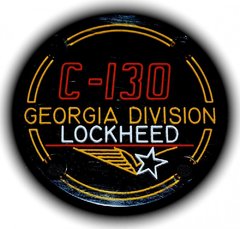
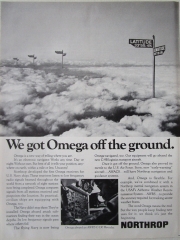
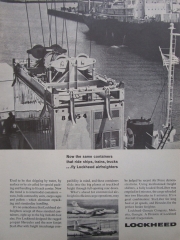
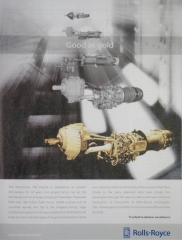
.jpg.92b50f5c03b93eb208a1866de1c7a2a9.jpg)
